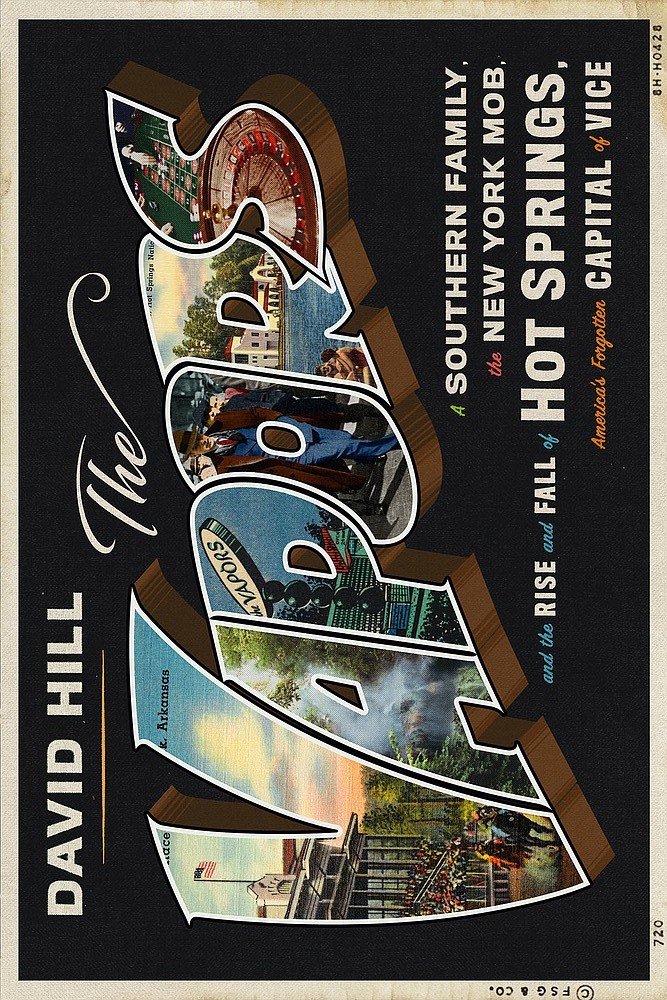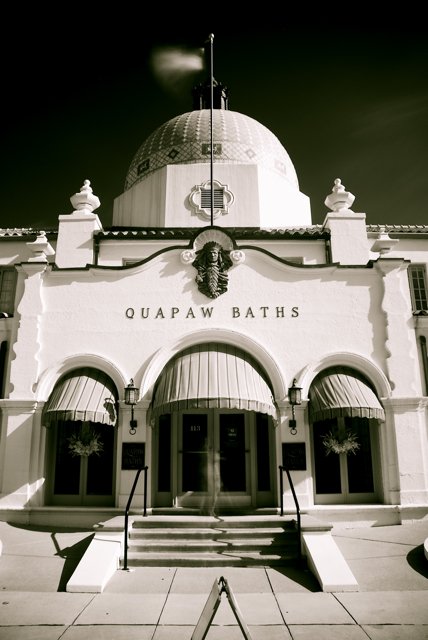
These days, when someone mentions a gambling mecca, you think of Monte Carlo or Macau or Las Vegas. Swanky hotels, loud casinos, crystal chandeliers. Maybe you think of headline entertainment and lavish stage productions. Maybe you think of all-you-can-eat buffets and gourmet restaurants. The idea that a gambling club offer ways to attract a wholesome clientele started in a small town in Arkansas.
The waters of Hot Springs were revered for their healing properties dating back to Native American legend. Even Joliet took a dip during his explorations for France in the early 1600s. After America made the Louisiana Purchase, and Arkansas became a territory, U.S. Congress declared the springs to be a federally protected area in 1832. It remains part of the National Park Service today.

Following the Civil War, the spa town became a battleground for two rival criminal gangs, fighting for control of the illegal gambling racket in town. Things stabilized with Owney Madden taking over in the early 1920s, the start of the tale in The Vapors.
Gambling was always illegal in Arkansas. Yet enough politicians and law enforcement were convinced to look the other way. Local officials were bribed to ignore the gambling and club owners kept the criminal activity down to a dull roar. State officials were paid off to rule gambling was a local issue and up to those jurisdictions to control. And so the dealers kept dealing.
The Arkansas Gazette… opined that is was gambling that made Arkansas seem backward, not it’s prohibition. … “Hot Springs as it exists today is a hangover from another era and it suggests nothing so much as the illusion that Arkansas is so bankrupt in its economy and principle that it must tolerate a traffic which most other states scorn.” In truth the Gazette was right. Hot Springs was a holdout from a different time, one in which entertainment was viewed holistically — treated as a function of southern hospitality and healing waters instead of neon signs and asphalt strips wider than the entire Valley of the Vapors. ~ Loc. 4043 of 5867
Hot Springs’ success attracted the notice of mob leaders in New York and Chicago, including the likes of Bugsy Siegel, Al Capone, Carlos Morello and Meyer Lansky. Local club owners agreed with Lansky that everything needed to be on the up-and-up (mostly) in order to keep federal agents at bay. Rival mobs wanted in on the action. Once Las Vegas sprang up in the desert, the mob didn’t want to split it’s investment and disagreed on which location to back. That is until a sigluar incident forced their hand.
Mostly a history, with a dash of memoir thrown in, David Hill recounts the history of the gambling and corruption that built Hot Springs through the lens of his grandmother and father’s lives. She loved to drink and dance at the clubs and found occasional work as a schill at the card tables. She had a slew of terrible men in her life and despite her neglect of them, her sons managed to break the cycle of impoverished life in a casino town.
I found this book to be an incredibly interesting look at a part of American history that I didn’t realize was so engrossing. I found myself continually surprised by the details and characters in the brief golden era in Hot Springs.
My thanks for FSG for the e-galley. Read an excerpt.
Hardcover: 400 pages
Publisher: Farrar, Straus and Giroux; Illustrated edition (July 7, 2020)
Language: English
ISBN-10: 1250086116
ISBN-13: 978-1250086112
